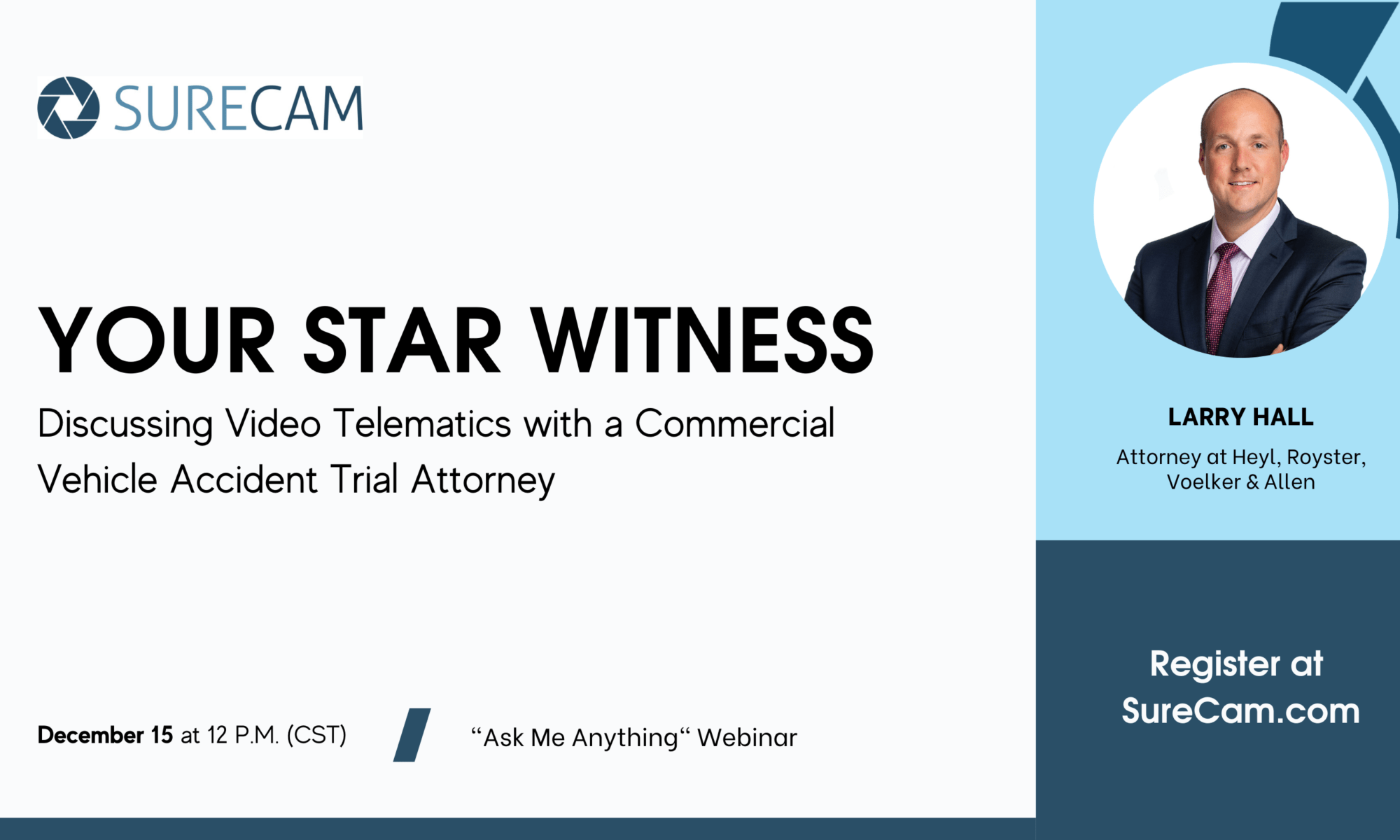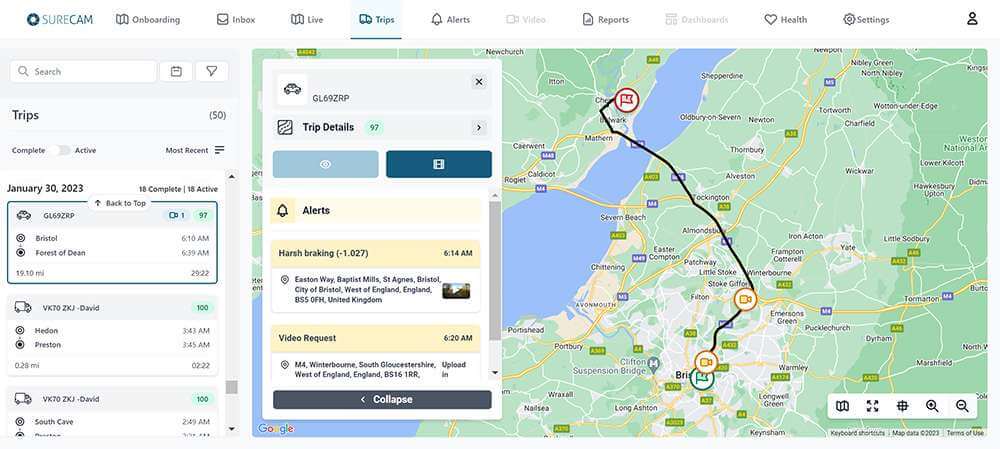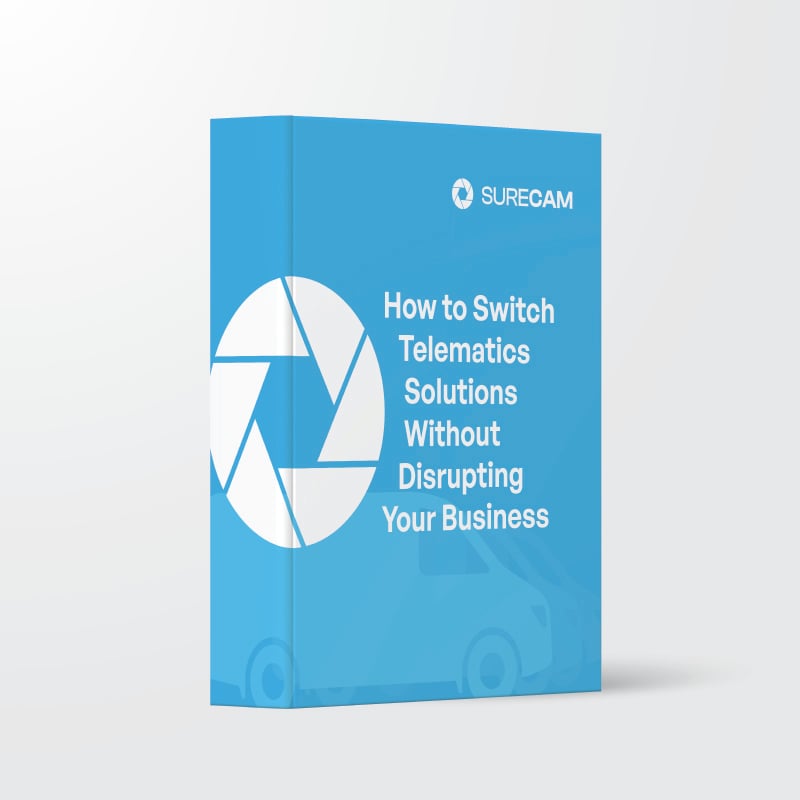Your Star Witness: Discussing Video Telematics with Commercial Vehicle Accident Attorney, Larry Hall [Free Webinar]

When accidents happen, companies with commercial vehicles find themselves as big targets for aggressive litigation. Video evidence is the gold standard when it comes to protecting your drivers and your business.
But what happens when your driver is at-fault? What camera views are best for protecting your business? Can in-vehicle video technology be more harmful than helpful?
Drawing upon more than 10 years of experience defending businesses involved in motor vehicle accidents, Larry Hall provided an update on the current state of commercial vehicle accident litigation and share insights on how to best implement policies, safety programs, and technology to mitigate the risk to your business.
Watch the video below...
Questions & Answers from the Discussion (Download the Printable Q&A Document)
STATE OF LITIGATION
Should all businesses, regardless of their size or industry, be concerned about aggressive litigation?
The litigation environment for commercial vehicles of all shapes and sizes is more treacherous than ever. A single catastrophic accident can put everything you have worked hard to build at risk. Big or small, you need to be concerned about risk. Every accident, regardless of its severity, should be treated as a big accident when it comes to capturing and preserving evidence. What you think was a small accident can be litigated aggressively like a big accident years later and made difficult to defend if no evidence has been preserved.
Are you seeing plaintiff’s attorneys going after assets above and beyond insurance limits?
The billboard attorneys are willing to file a lawsuit and seek millions, or even billions, no matter who is at fault. They often take pride in seeking judgments beyond what an insurance policy will cover. Businesses should consult with their lawyers to make sure their assets are structured in a way that limits their exposure in the event they find themselves wrapped up in aggressive litigation.
Benefit (or not) of company owned dashcams vs. driver owned ones?
It is always better to own your own connected dashcams than rely on footage from driver owned dashcams. You can avoid trying to compel your driver to share footage with you that they may not want to share when they own their own camera. Company owned connected dashcams help you avoid this situation altogether.
Can police demand camera content after an accident? How should companies proceed with this request?
You can be legally compelled to provide video footage from your dash cameras, but you do not have to provide that video footage at the scene of an accident if requested to do so. If the accident resulted in injuries, it is best to coordinate the releasing of video footage with your insurance company and legal representation.
IN-VEHICLE TECHNOLOGY
What are you seeing with regard to case outcomes with clients who have fleet video and those who do not?
Dash cameras take the guess work out of what happened in an accident and provides an objective account of what occurred. Camera footage is one of the best tools out there to use in your defense because it is hard to argue with objective evidence. If the footage shows that your driver has shared liability in the accident, knowing what we are dealing with helps us form a strategy to limit your overall liability in the case.
Video or no video? When are companies better off with it and when are they better off without it?
Video is an incredible tool. It allows an early evaluation of the case in an accurate manner. Even when it comes to a fender bender, it’s difficult to settle claims when it’s he said/she said. Video is the only witness that eliminates the ‘he said/she said’ and can shut down a false claim.
Can dashcams be bad when your driver is at-fault?
It’s never ideal when your driver is at fault, but video can reduce the total cost of the case even if it shows that your driver was doing something wrong at the time of the accident. It gives us the information that we need to try and settle the claim as quickly and efficiently as possible.
What drives these nuclear verdicts is not sympathy from the jury, it’s anger. One way to lesson anger is to concede when appropriate, even if your driver was doing something minor.
How big of a liability is it to have a camera system and not document, coach, or try to correct driver issues?
You always want to be able to show that you take safety seriously and have documentation showing that you are providing training and coaching when appropriate.
If you have a camera system, but don’t have the time or resources to coach every behavioral concern being captured, you should make some changes so that your in-vehicle technology is providing you with the level of feedback that you can confidently act on. It can be a liability for your business if you are collecting and sitting on evidence of poor driving behavior and not doing anything about it.
Additionally, you want to make sure that your safety policies are updated to reflect how you will handle escalations when your in-vehicle technology shows an employee violated a policy. Be prepared to consistently hold employees to your policies. If you aren’t upholding your policies across your entire team, you can open up your business to more risk during litigation.
How important is it for a company to be able to respond quickly when a BIG accident occurs?
The first minutes and hours are incredibly important. What’s important is that you have a plan in place to respond quickly. If you have an accident, your employees need to know who to contact. Your company’s point(s) of contact need to know what documents to gather and what evidence to collect and preserve. They also need to know when and how to engage their insurance representative and legal representation if appropriate.
It's often too late if you start creating your accident response plan after an accident occurs. You want to be prepared to respond to accidents before they happen. It is best to work with legal representation or your insurance company to make sure you have a robust post-accident response plan in place should you need it.
Is it better to have dual facing cameras or is it best not to have video of your driver?
Deciding to go with a dual facing camera system or just a road facing camera entirely depends on what you are prepared to do with the in-cab footage.
If you have the time and resources to coach and correct infractions recorded by the in-cab camera, the dual-facing camera can be very effective for defense purposes as well as proactive coaching to help avoid accidents altogether.
Just be sure that if you are collecting data or evidence that shows your drivers are violating your policies, you are taking appropriate actions to coach and discipline, even fire drivers when necessary, when those violations occur.
What do you want people to be aware of when considering AI video technology?
AI dash camera technology can be great for improving fleet safety and preventing accidents before they even happen is the ultimate goal. The biggest consideration for whether AI is right for you is your capacity to review, coach, and discipline your drivers at the rate the AI data insights are made available to you. It all comes down to how much data you can reasonably handle and react to as a business and you need to ensure your safety policies and disciplinary measures are being evenly applied across all employees.
Anything people need to be thinking about when utilizing a disabled in-cab camera vs. just going with forward road-only facing cameras?
It is best to use the technology as it is intended. You definitely want to avoid situations where drivers disable in-cab cameras or cover up the camera view with electrical tape. Whether or not your or the driver intends to, it makes it seem like they have something to hide and that can be very damaging in a case. The company needs to be very clear on what camera views it wants to utilize and ensure that the technology is being used as intended.
SAFETY PROGRAM
What is your best practice recommendation for video retention when an accident occurs?
Every accident needs to be taken seriously. After any type of accident make sure you have an accident folder in a digital space to store documents and video. Retain that video until the statute of limitation expires.
In Missouri, the statute of limitations is 5 years. It is a best practice to know the statute of limitations of the states you operate in and have a retention policy that covers the longest statute of limitations period that could apply to your business.
Know what your video providers retention policy is and make sure you are taking the appropriate actions to obtain that video while it is still available to you.
What other information would you want businesses to collect and save for potential litigation?
Vehicle maintenance documents are important as well as driver training documents. Make especially sure training is documented should you ever need it for this purpose. If you take any photos or conduct an incident investigation, you will want to include those files in this folder as well as any routing information or driver logs captured from the day and days leading up to the accident. If a drug and alcohol test is collected as a result of the accident, you will want to preserve those findings as well.
How would you advise companies to structure their safety programs when they have in-vehicle technology?
Make sure what gets documented by the system, gets reviewed by a designated person or team. If you have strict policies in place, make sure you follow through on them across the entire team.
What should companies be thinking about as table stakes when designing a “post-accident response” plan?
The ideal time to determine the best post-accident response plan for your company is before an accident occurs. Your employees need to know who should get the first call and the person who is responsible for receiving the first call needs to know what information to collect and who else needs to be notified.
FMCSA only requires drug and alcohol testing for certain accidents. Do you recommend Drug and Alcohol testing on all vehicle incidents or only the ones required by FMCSA?
Holding to FMCSA’s drug and alcohol testing protocols is a good minimum standard. The impact of legalized marijuana use on drug and alcohol testing is creating a lot of complexity when locking in a drug and alcohol policy. Consider the laws of the state you’re operating in and whether or not your driving is regulated by the federal government. Whatever drug and alcohol policy you choose, make sure you uphold it.
Want to save these insights to refer back to them later? Download the Printable Q&A Document

Book a demo today!
SureCam offers GPS vehicle tracking, live video, and real-time alerts for efficient fleet management. Get a Demo


